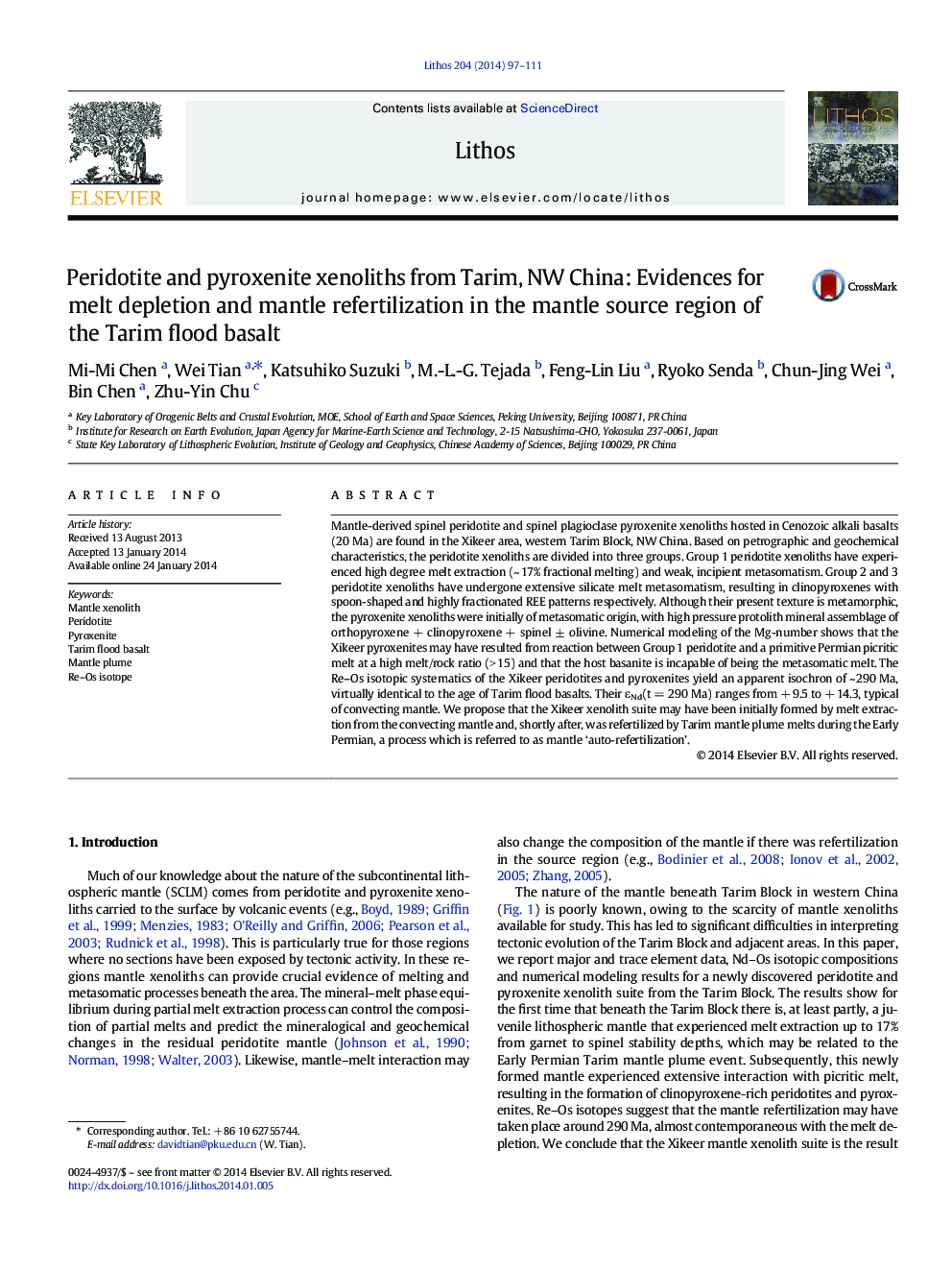| کد مقاله | کد نشریه | سال انتشار | مقاله انگلیسی | نسخه تمام متن |
|---|---|---|---|---|
| 4715854 | 1638674 | 2014 | 15 صفحه PDF | دانلود رایگان |

• We report for the first time Re–Os isotopes of Xikeer mantle xenoliths in Tarim.
• Data for mantle xenolith suite plot along an ~ 290 Ma isochron line.
• The Tarim lithosphere mantle had undergone upwelling from garnet- to spinel-facies.
• The REE modeling shows up to 17% melt extraction of the juvenile lithosphere.
• Numerical modeling shows extensive mantle metasomatism related to the plume event.
Mantle-derived spinel peridotite and spinel plagioclase pyroxenite xenoliths hosted in Cenozoic alkali basalts (20 Ma) are found in the Xikeer area, western Tarim Block, NW China. Based on petrographic and geochemical characteristics, the peridotite xenoliths are divided into three groups. Group 1 peridotite xenoliths have experienced high degree melt extraction (~ 17% fractional melting) and weak, incipient metasomatism. Group 2 and 3 peridotite xenoliths have undergone extensive silicate melt metasomatism, resulting in clinopyroxenes with spoon-shaped and highly fractionated REE patterns respectively. Although their present texture is metamorphic, the pyroxenite xenoliths were initially of metasomatic origin, with high pressure protolith mineral assemblage of orthopyroxene + clinopyroxene + spinel ± olivine. Numerical modeling of the Mg-number shows that the Xikeer pyroxenites may have resulted from reaction between Group 1 peridotite and a primitive Permian picritic melt at a high melt/rock ratio (> 15) and that the host basanite is incapable of being the metasomatic melt. The Re–Os isotopic systematics of the Xikeer peridotites and pyroxenites yield an apparent isochron of ~ 290 Ma, virtually identical to the age of Tarim flood basalts. Their εNd(t = 290 Ma) ranges from + 9.5 to + 14.3, typical of convecting mantle. We propose that the Xikeer xenolith suite may have been initially formed by melt extraction from the convecting mantle and, shortly after, was refertilized by Tarim mantle plume melts during the Early Permian, a process which is referred to as mantle ‘auto-refertilization’.
Journal: Lithos - Volume 204, 1 September 2014, Pages 97–111